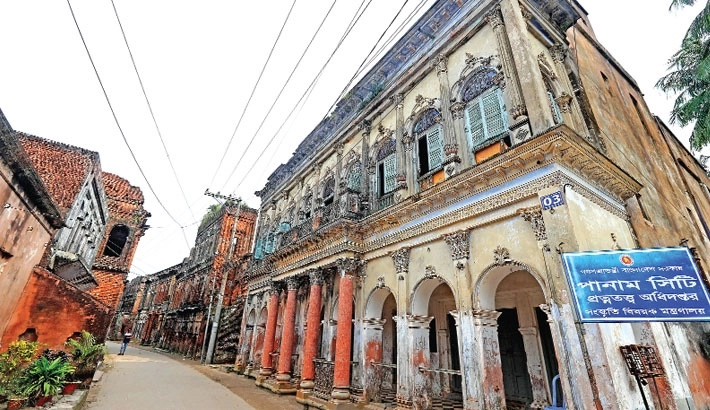Panam Nagar is a fully abandoned city of Hindu merchants in Bangladesh built in the early nineteenth century, located about 37 km south of the capital city Dhaka. It is a popular tourist attraction in Bangladesh and one of the highlights of the country – a must-visiting site for travelers visiting Bangladesh.
It is a protected city by the archaeological department of Bangladesh, open six days a week for visitors. It is a popular destination for day tours, which is a two hours drive from Dhaka. You can spend a full day visiting the city, along with the Sonargaon Folk-arts and Crafts Museum, Goaldi Mosque, and the other attractions of Sonargaon.
The History of Panam City in Sonargaon
When was Panam Nagar established
Panam, ancient Painam, a locality in Sonargaon, is said to have been the site of the Hindu capital city of Sonargaon emerging in the late thirteenth century. The area formed part of the Muslim metropolis developed on the south of the old city and perhaps constituted the place of residence of the early Muslim governors of the Sultanate of Bengal from 1338.
After the Mughal conquest of Sonargaon in 1610, the Panam area was connected with the ruling metropolis by constructing highways and bridges, which still exist. The existence of these bridges and the canals enclosing the site on three sides is indicative of its being a suburban area of the medieval city.
In the early 19th century, during colonial rule, Sonargaon developed into a trade center in cotton fabrics, mainly English-piece goods. It is estimated that there were about 1400 families of Hindu and Muslim weavers in and around Panam. At that time, the British East India Company established its factory in Panam to purchase muslin and other cotton fabrics.
At that time, a group of wealthy Hindu merchants from Kolkata, which was then the capital of colonial India, returned to their ancestral land in Sonargaon and started to build a small township in the area over an older ruined settlement. Thus established the new township of Panam Nagar (Panam City). The existing buildings in Panam Nagar, the Hindu merchants’ residents, were established from the early nineteenth to the early twentieth century. The city continued to flourish until the end of the Second World War.
How Panam Nagar was abandoned
Panam Nagar was abandoned after a series of racial riots sparked during the Bengal Divide in 1947. The city was finally deserted after the Hindus migrated to India during the Indo-Pak War of 1965, making it an empty township.
The city was later exposed to threats of flooding, vandalism, unauthorized occupation, litigation by illegal occupants, illegal development, poor maintenance, and earthquakes.
In 2006, World Monument Fund declared Panam Nagar as one of the 100 ruinous historical establishments.
The current state of Panam Nagar
In 2009, fifty-two buildings, and eventually the city, were freed by the Bangladesh govt. from unauthorized occupation. The Department of Archaeology then declared the area a protected heritage site. A new road has been made to bypass the city for the residents around the city, who used Panam Street to access their residences.
Accessing the city by the locals has been limited by making protection fences and gates. Security forces have been deployed to protect the city from vandalism. It is now open to visitors six days a week by paying an entry fee and has become a top-rated attraction to the local tourists, mostly coming from Dhaka.
Conclusion
The regal signs are still present in the bricks of the ancient walls and the terracotta works on the black stones! A busy city of once upon a time, is now only a part of history. There is no crowd, no noise. It is like a city which has been lost for hundred of years. It is the Panam Nagar which is also known as ‘The Lost City’; it still bears witness to Sonargaon’s glorious history that was known as the capital of Bengal. The city is almost in ruins. In 2006, World Monument Fund declared Panam Nagar as one of the 100 ruinous historical establishments.

